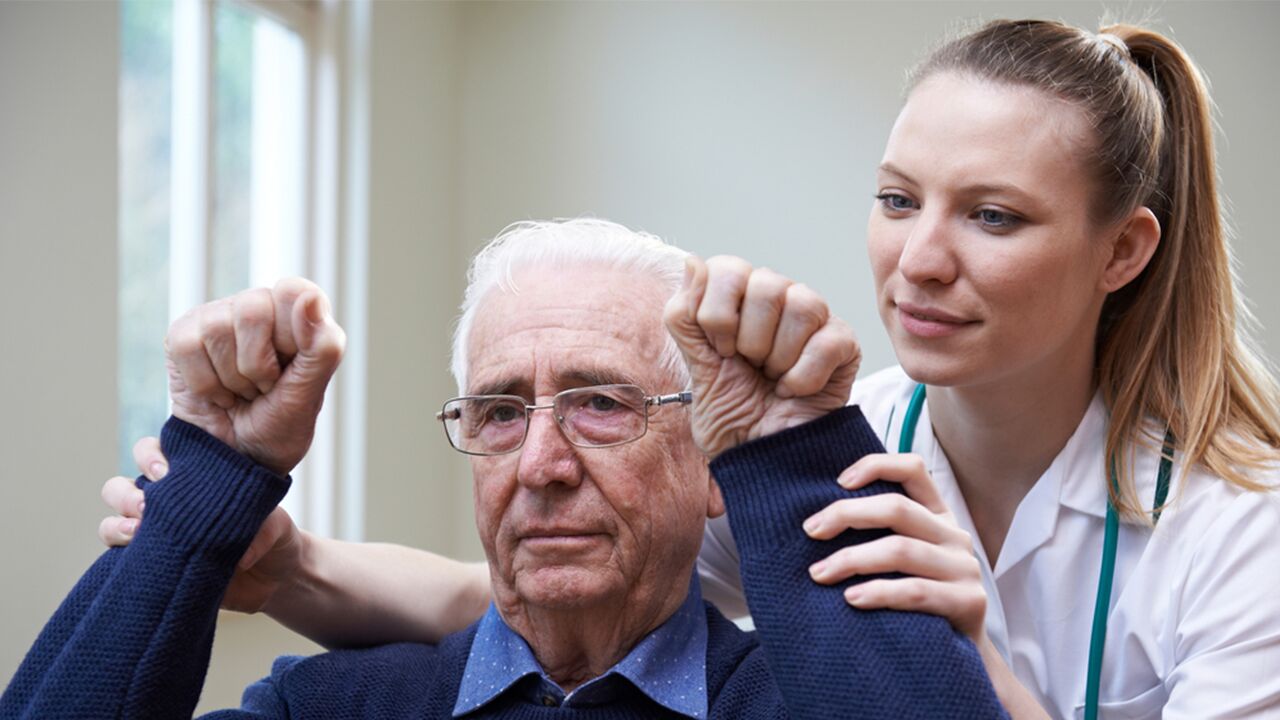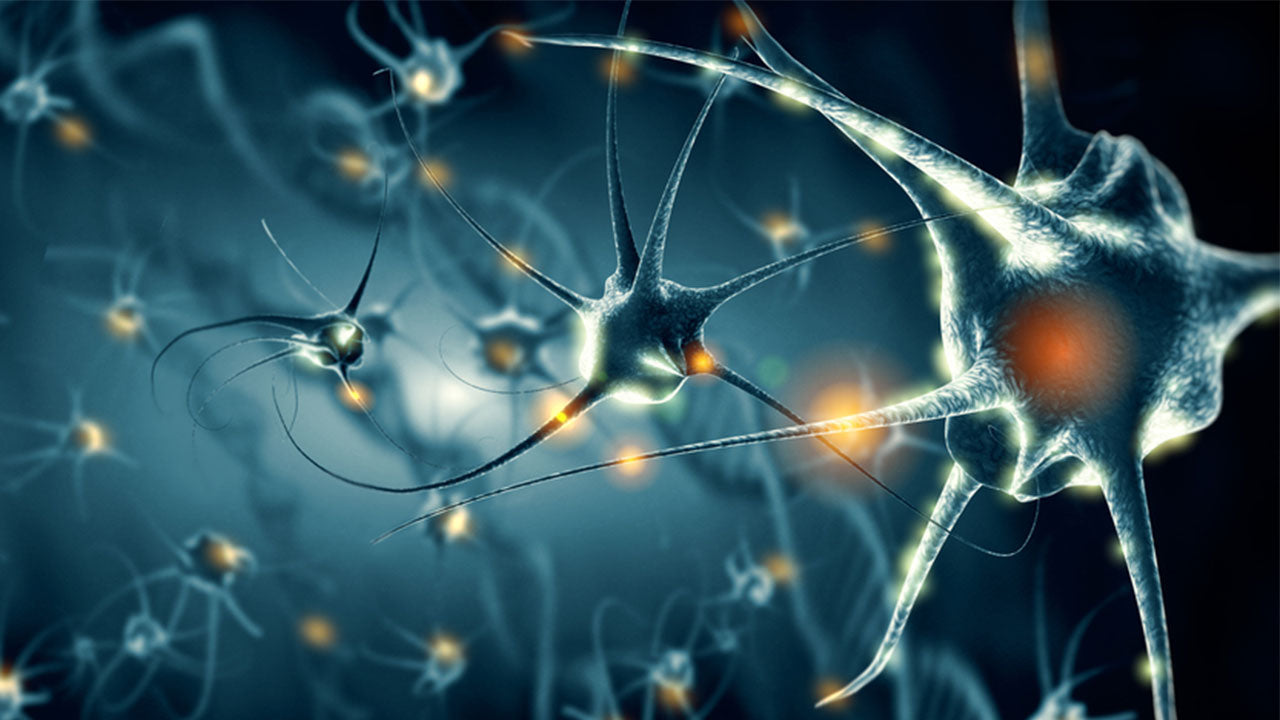Stroke Recovery: How to Spot a Stroke and Tips for Treatment and Prevention
 By: by Amino Science
By: by Amino Science

Did you know that 10-20% of your body's blood supply goes to your brain, delivering much-needed oxygen and critical nutrients? When blood flow to the brain is impaired, the brain stops receiving oxygen and nutrients, brain cells start to die, and a stroke is underway. Strokes can occur close to the surface of the brain or deep within the tissues—the damage depends on the area of the brain that is affected, the type of stroke, and the severity.
Stroke is the fifth leading cause of death in the United States, and it is considered a medical emergency. According to the Centers for Disease Control and Prevention (CDC), about 800,000 people in the United States each year have a stroke, and strokes kill around 140,000 Americans annually. Let's gain a better understanding of this ominous cardiovascular event and what to expect on the road to stroke recovery.
Signs of a Stroke
Recognizing the symptoms of a stroke is crucial. Patients who arrive at the emergency room within three hours of manifesting symptoms recover faster than patients whose care was delayed. Use the “FAST” test to determine if you or someone you love is having a stroke.

What Causes a Stroke?
The cause determines the type of stroke and the part of the brain affected.
Ischemic Stroke
An ischemic stroke occurs when the blood vessels in the brain close up or become blocked. Up to 90% of all strokes are ischemic. The most common types are:
- Thrombotic stroke: This type of ischemic stroke happens when a clot forms in a blood vessel due to a build up of plaque that results in reduced blood flow (thrombosis).
- Embolic stroke: When a clot forms in another part of the body and moves to the brain, blocking an artery (embolism), an embolic stroke can occur.
According to Harvard Medical School, up to one-fifth of all strokes are lacunar. A lacunar stroke is a type of ischemic stroke resulting from a blockage in tiny arteries deep inside the brain. More than 90% of patients who experienced a lacunar stroke recover within the first 90 days after the stroke.
Transient Ischemic Attack (TIA)
A transient ischemic attack (TIA), also called a mini-stroke, is similar to an ischemic stroke because it is caused by a clot blocking blood flow to part of the nervous system, but there is no permanent brain damage. Symptoms are similar to those of an ischemic stroke (weakness on one side of the body and slurred speech) but they usually last less than 5 minutes. It might be difficult to tell if you are having a stroke or a TIA based on symptoms, so always seek immediate medical attention.
Hemorrhagic Stroke
A hemorrhagic stroke occurs when a blood vessel leaks blood into the brain. Hemorrhagic strokes are rarer than ischemic strokes, but they account for between 30% and 60% of all stroke-related deaths. The most common types of hemorrhagic stroke are:
- Intracerebral hemorrhage: An intracerebral hemorrhage is caused by a blood vessel in the brain leaking into the brain tissue and harming the cells (aneurysm). High blood pressure, vascular malformations, trauma and use of blood-thinning medications are notable risk factors for intracerebral hemorrhage.
- Subarachnoid hemorrhage: When an artery in the brain spills into the region between the skull and the brain, a subarachnoid hemorrhage can occur—a sudden, severe headache usually signals the bleeding. After the hemorrhage, the blood vessels widen and narrow intermittently, causing cell damage.
Stroke Risk Factors
Many factors can increase stroke risk. Lifestyle risk factors include being overweight, physical inactivity, and addiction to alcohol and drugs. Medical risk factors include blood pressure higher than 120/80 millimeters of mercury, smoking, high cholesterol, diabetes, sleep apnea, heart disease, and family history.
Keep in mind that smoke, secondhand smoke, and heavy alcohol consumption raise the risk of stroke. Certain street drugs, such as cocaine and methamphetamines, are also risk factors for a TIA or a stroke.
Stroke Prevention
Adopting a healthy lifestyle is one of the best steps you can take to prevent a stroke.
- Keep tabs on your blood pressure. Monitor your blood pressure and keep it low by exercising regularly, managing stress, and maintaining a healthy weight. If you tend to have high blood pressure, ask your doctor about the best methods for regulation, which may include prescription medications if lifestyle alterations are unable to lower blood pressure to safe levels.
- Eat a healthy diet. Cut back on saturated fat and trans fats to reduce plaque in your arteries. Be sure to include the recommended five or more daily servings of fruits or vegetables to reduce the risk of stroke.
- Exercise often. Cardio workouts help you lose weight, lower your blood pressure, and improve the health of your blood vessels and heart. Exercise regularly to maintain a healthy weight.
- Take preventive medications as prescribed. In addition to lifestyle changes, you can ask your doctor about preventive medications. Antiplatelet drugs, like aspirin, make blood cells less sticky and less likely to clot. Aggrenox, a combination of low-dose aspirin and the anti-platelet drug dipyridamole, is commonly prescribed to decrease the risk of blood clotting.
Stroke Recovery
For a full recovery and to accelerate recovery time, follow these tips:
- Therapy: Physical therapists and psychologists can help reverse the physical and mental effects of a stroke and prevent depression. Occupational therapy and speech therapy can help you regain cognitive abilities and improve your speech following a stroke. Follow the instructions of your health care team and be patient with your rehabilitation program as you rebuild strength and improve coordination.
- Gait rehabilitation: To regain gait and mobility, physical and occupational therapists recommend a stroke recovery program that incorporates strength training, treadmill training, and functional electrical stimulation to help reprogram your muscles. About 65-85% of stroke sufferers will be able to walk independently within 6 months after a stroke.
- Eye exercises: About 25% of all stroke survivors experience issues with vision, and eye exercises can help. Standard letter search or word search puzzles can be easily incorporated into your daily life.
- Support: Having a support network is crucial throughout the recovery process. Your family members and loved ones can help you heal the emotional distress left by the stroke, but you can also look for local support groups through the American Heart Association.
- Sleep: After a stroke, it might be difficult to fall asleep, and small strategies can help. Sleep in a cool room, turn off technology at least 30 minutes before going to bed and practice meditation to release stress.
- Blood sugar levels: Reduce consumption of foods that can raise blood sugar levels. Cut refined sugars, grains, and alcohol from your diet—eat high-fiber foods that help keep blood sugar levels within the normal range.
- Yoga and meditation: Studies show that yoga improves physical, mental, and emotional health after a stroke—GABA, the neurotransmitter that regulates anxiety, is released in the brain during yoga. Studies have also found that meditation can reduce pain, improve sleep quality, help mental performance, boost productivity, and increase happiness.
- Vitamin D: Low serum levels of vitamin D are associated with post-stroke depression. Taking supplements of high-quality vitamin D can help improve neurologic and cognitive function. Eat foods that contain high levels of vitamin D such as sardines and salmon and, if possible, get at least 20 minutes each day of sun.
Amino Acids for Stroke Recovery
Can amino acid supplements help during stroke rehabilitation? The latest research shows promising results regarding the effects of amino acids on stroke patients during exercise and recovery.
One study showed that 30 days of oral supplementation with an optimally formulated mixture of amino acids alongside conventional therapy improved exercise capacity in 95 elderly people with chronic heart failure. The patients were randomly assigned to 4 grams of amino acids taken twice daily or a placebo. Results showed that exercise capacity in the amino acid group improved compared to the placebo group—oral amino acid supplementation, in conjunction with pharmacologic therapy, enhanced circulatory function, muscle oxygen consumption, and aerobic production of energy.
Another study examined amino acid and protein metabolism during exercise and recovery and found that amino acids restore glycogen, a substance deposited in bodily tissues as a store of carbohydrates, which are used as fuel during exercise.
Taking a balanced amino acid supplement can also stimulate muscle protein synthesis. During recovery patients often stay in bed, and go through periods of physical inactivity. Studies show that essential amino acids reduce the loss of muscle protein mass and physical strength.
The Amino Company has developed two formulas that can be used to help treat and prevent stroke. For prevention there's Life, an active aging blend of essential amino acids designed to help strengthen heart health as we grow older. You can learn more and purchase Life here. For recovery there's Heal, a blend of amino acids proven to help accelerate recovery and improve rehabilitation outcomes. Find Heal here.
For more information on stroke risks, causes, and prevention, as well as resources for coping with life after a stroke, visit the National Stroke Association/American Stroke Association website.


Up to 25% off Amino
Shop NowTAGS: illness
Join the Community
Comments (0)
Most Craveable Recipes




 833-264-6620
833-264-6620



















